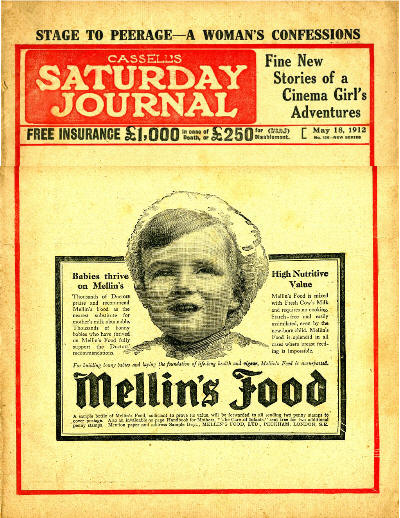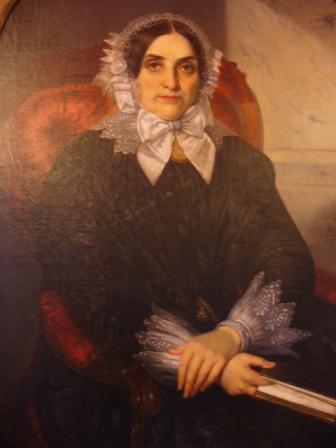|
A Child Of The Revolution
First published in 1932, ''A Child of the Revolution'' is chronologically the last book in the Scarlet Pimpernel series by Baroness Orczy. Plot During one return home, Sir Percy tells the story of André Vallon, a young Jacobin, to the Prince of Wales. André, wishing to revenge himself on a despotic seigneur, uses the Jacobins' rise to force the seigneur's daughter to marry him. Once wed, they come to love each other, only to have the old seigneur ''Seigneur'' is an originally feudal title in France before the Revolution, in New France and British North America until 1854, and in the Channel Islands to this day. A seigneur refers to the person or collective who owned a ''seigneurie'' (or ... denounce André in an attempt to free his daughter. 1932 British novels Scarlet Pimpernel books Novels by Baroness Emma Orczy Cassell (publisher) books English-language novels {{1930s-hist-novel-stub ... [...More Info...] [...Related Items...] OR: [Wikipedia] [Google] [Baidu] |
Emma Orczy
Baroness Emma Orczy (full name: Emma Magdolna Rozália Mária Jozefa Borbála Orczy de Orci) (; 23 September 1865 – 12 November 1947), usually known as Baroness Orczy (the name under which she was published) or to her family and friends as Emmuska Orczy, was a Hungary, Hungarian-born British novelist and playwright. She is best known for her series of novels featuring the The Scarlet Pimpernel, Scarlet Pimpernel, the alter ego of Sir Percy Blakeney, a wealthy English fop who turns into a quick-thinking Escapology, escape artist in order to save French nobility, French aristocrats from "Madame Guillotine" during the French Revolution, establishing the "hero with a secret identity" in popular culture. Opening in London's West End theatre, West End on 5 January 1905, ''The Scarlet Pimpernel'' became a favourite of British audiences. Some of Orczy's paintings were exhibited at the Royal Academy in London. During World War I, she formed the Women of England's Active Service League, ... [...More Info...] [...Related Items...] OR: [Wikipedia] [Google] [Baidu] |
The Scarlet Pimpernel
''The Scarlet Pimpernel'' is the first novel in a series of historical fiction by Baroness Orczy, published in 1905. It was written after her stage play of the same title (co-authored with Montague Barstow) enjoyed a long run in London, having opened in Nottingham in 1903. The novel is set during the Reign of Terror following the start of the French Revolution. The title is the ''nom de guerre'' of its hero and protagonist, a chivalrous Englishman who rescues aristocrats before they are sent to the guillotine. Sir Percy Blakeney leads a double life: apparently nothing more than a wealthy fop, but in reality a formidable swordsman and a quick-thinking master of disguise and escape artist. The band of gentlemen who assist him are the only ones who know of his secret identity. He is known by his symbol, a simple flower, the scarlet pimpernel (''Anagallis arvensis''). Opening at the New Theatre in London's West End on 5 January 1905, the play became a favourite of British audienc ... [...More Info...] [...Related Items...] OR: [Wikipedia] [Google] [Baidu] |
Adventure Novel
Adventure fiction is a type of fiction that usually presents danger, or gives the reader a sense of excitement. Some adventure fiction also satisfies the literary definition of romance fiction. History In the Introduction to the ''Encyclopedia of Adventure Fiction'', Critic Don D'Ammassa defines the genre as follows: D'Ammassa argues that adventure stories make the element of danger the focus; hence he argues that Charles Dickens's novel ''A Tale of Two Cities'' is an adventure novel because the protagonists are in constant danger of being imprisoned or killed, whereas Dickens's ''Great Expectations'' is not because "Pip's encounter with the convict is an adventure, but that scene is only a device to advance the main plot, which is not truly an adventure." Adventure has been a common theme since the earliest days of written fiction. Indeed, the standard plot of Medieval romances was a series of adventures. Following a plot framework as old as Heliodorus, and so durable as t ... [...More Info...] [...Related Items...] OR: [Wikipedia] [Google] [Baidu] |
Historical Novel
Historical fiction is a literary genre in which the plot takes place in a setting related to the past events, but is fictional. Although the term is commonly used as a synonym for historical fiction literature, it can also be applied to other types of narrative, including theatre, opera, cinema, and television, as well as video games and graphic novels. An essential element of historical fiction is that it is set in the past and pays attention to the manners, social conditions and other details of the depicted period. Authors also frequently choose to explore notable historical figures in these settings, allowing readers to better understand how these individuals might have responded to their environments. The historical romance usually seeks to romanticize eras of the past. Some subgenres such as alternate history and historical fantasy insert intentionally ahistorical or speculative elements into a novel. Works of historical fiction are sometimes criticized for lack of authe ... [...More Info...] [...Related Items...] OR: [Wikipedia] [Google] [Baidu] |
Cassell & Co
Cassell & Co is a British book publishing house, founded in 1848 by John Cassell (1817–1865), which became in the 1890s an international publishing group company. In 1995, Cassell & Co acquired Pinter Publishers. In December 1998, Cassell & Co was bought by the Orion Publishing Group. In January 2002, Cassell imprints, including the Cassell Reference and Cassell Military were joined with the Weidenfeld imprints to form a new division under the name of Weidenfeld & Nicolson Ltd. Cassell Illustrated survives as an imprint of the Octopus Publishing Group. History John Cassell (1817–1865), who was in turn a carpenter, temperance preacher, tea and coffee merchant, finally turned to publishing. His first publication was on 1 July 1848, a weekly newspaper called ''The Standard of Freedom'' advocating religious, political, and commercial freedom. '' The Working Man's Friend'' became another popular publication. In 1849 Cassell was dividing his time between his publishing and his gr ... [...More Info...] [...Related Items...] OR: [Wikipedia] [Google] [Baidu] |
Hardcover
A hardcover, hard cover, or hardback (also known as hardbound, and sometimes as case-bound) book is one bound with rigid protective covers (typically of binder's board or heavy paperboard covered with buckram or other cloth, heavy paper, or occasionally leather). It has a flexible, sewn spine which allows the book to lie flat on a surface when opened. Modern hardcovers may have the pages glued onto the spine in much the same way as paperbacks. Following the ISBN sequence numbers, books of this type may be identified by the abbreviation Hbk. Hardcover books are often printed on acid-free paper, and they are much more durable than paperbacks, which have flexible, easily damaged paper covers. Hardcover books are marginally more costly to manufacture. Hardcovers are frequently protected by artistic dust jackets, but a "jacketless" alternative has increased in popularity: these "paper-over-board" or "jacketless" hardcover bindings forgo the dust jacket in favor of printing the cove ... [...More Info...] [...Related Items...] OR: [Wikipedia] [Google] [Baidu] |
Paperback
A paperback (softcover, softback) book is one with a thick paper or paperboard cover, and often held together with adhesive, glue rather than stitch (textile arts), stitches or Staple (fastener), staples. In contrast, hardcover (hardback) books are bound with cardboard covered with cloth, leather, paper, or plastic. Inexpensive books bound in paper have existed since at least the 19th century in such forms as pamphlets, yellow-backs, yellowbacks, dime novels, and airport novels. Modern paperbacks can be differentiated from one another by size. In the United States, there are "mass-market paperbacks" and larger, more durable "trade paperbacks". In the United Kingdom, there are A-format, B-format, and the largest C-format sizes. Paperback editions of books are issued when a publisher decides to release a book in a low-cost format. Lower-quality paper, glued (rather than stapled or sewn) bindings, and the lack of a hard cover may contribute to the lower cost of paperbacks. Paperb ... [...More Info...] [...Related Items...] OR: [Wikipedia] [Google] [Baidu] |
The Triumph Of The Scarlet Pimpernel
''The Triumph of the Scarlet Pimpernel'', first published in 1922, is a book in the series about the Scarlet Pimpernel's adventures by Baroness Orczy. Again Orczy interweaves historic fact with fiction, this time through the real life figures of Thérésa Cabarrus, and Jean-Lambert Tallien; inserting the Scarlet Pimpernel as an instigator of the role Tallien played in the Thermidorian Reaction in July 1794. Plot summary The story starts in Paris in April 1794, year II of the French Revolution The French Revolution ( ) was a period of radical political and societal change in France that began with the Estates General of 1789 and ended with the formation of the French Consulate in November 1799. Many of its ideas are considere .... Theresia Cabarrus is a beautiful but shallow Spaniard who is betrothed to Citizen Tallien the popular Representative in the Convention and one of Robespierre's inner circle. She is credited with exercising a mellowing influence over Tall ... [...More Info...] [...Related Items...] OR: [Wikipedia] [Google] [Baidu] |
Pimpernel And Rosemary
''Pimpernel and Rosemary'' is a novel by Baroness Emmuska Orczy, originally published in 1924. It is set after the First World War and features Peter Blakeney, a descendant of the Scarlet Pimpernel (Percy Blakeney). The action is mainly set amongst the disaffected Hungarian nobility in Transylvania, allowing Orczy to draw on her knowledge of Hungarian history Hungary in its modern (post-1946) borders roughly corresponds to the Great Hungarian Plain (the Pannonian Basin). During the Iron Age, it was located at the crossroads between the cultural spheres of the Celtic tribes (such as the Scordisci, Boii ... and politics. External links * * 1924 British novels Scarlet Pimpernel books Novels by Baroness Emma Orczy Fiction set in 1922 Cassell (publisher) books {{1920s-adventure-novel-stub ... [...More Info...] [...Related Items...] OR: [Wikipedia] [Google] [Baidu] |
The Scarlet Pimpernel
''The Scarlet Pimpernel'' is the first novel in a series of historical fiction by Baroness Orczy, published in 1905. It was written after her stage play of the same title (co-authored with Montague Barstow) enjoyed a long run in London, having opened in Nottingham in 1903. The novel is set during the Reign of Terror following the start of the French Revolution. The title is the ''nom de guerre'' of its hero and protagonist, a chivalrous Englishman who rescues aristocrats before they are sent to the guillotine. Sir Percy Blakeney leads a double life: apparently nothing more than a wealthy fop, but in reality a formidable swordsman and a quick-thinking master of disguise and escape artist. The band of gentlemen who assist him are the only ones who know of his secret identity. He is known by his symbol, a simple flower, the scarlet pimpernel (''Anagallis arvensis''). Opening at the New Theatre in London's West End on 5 January 1905, the play became a favourite of British audienc ... [...More Info...] [...Related Items...] OR: [Wikipedia] [Google] [Baidu] |
Seigneur
''Seigneur'' is an originally feudal title in France before the Revolution, in New France and British North America until 1854, and in the Channel Islands to this day. A seigneur refers to the person or collective who owned a ''seigneurie'' (or ''seigneury'')—a form of land tenure—as a fief, with its associated rights over person and property. A seigneur could be an individual—male or female (''seigneuresse''), noble or non-noble (''roturier'')—or a collective entity such a religious community, monastery, seminary, college, or parish. This form of lordship was called ''seigneurie'', the rights that the seigneur was entitled to were called ''seigneuriage'', and the jurisdiction exercised was ''seigneur justicier'' over his fief. In the wake of the French Revolution, seigneurialism was repealed in France on 4 August 1789 and in the Province of Canada on 18 December 1854. Since then, the feudal title has only been applicable in the Channel Islands and for sovereign princ ... [...More Info...] [...Related Items...] OR: [Wikipedia] [Google] [Baidu] |
1932 British Novels
Year 193 ( CXCIII) was a common year starting on Monday (link will display the full calendar) of the Julian calendar. At the time, it was known as the Year of the Consulship of Sosius and Ericius (or, less frequently, year 946 ''Ab urbe condita''). The denomination 193 for this year has been used since the early medieval period, when the Anno Domini calendar era became the prevalent method in Europe for naming years. Events By place Roman Empire * January 1 – Year of the Five Emperors: The Roman Senate chooses Publius Helvius Pertinax, against his will, to succeed the late Commodus as Emperor. Pertinax is forced to reorganize the handling of finances, which were wrecked under Commodus, to reestablish discipline in the Roman army, and to suspend the food programs established by Trajan, provoking the ire of the Praetorian Guard. * March 28 – Pertinax is assassinated by members of the Praetorian Guard, who storm the imperial palace. The Empire is auctioned off ... [...More Info...] [...Related Items...] OR: [Wikipedia] [Google] [Baidu] |






